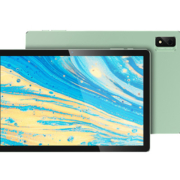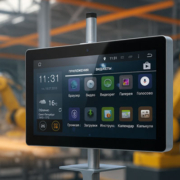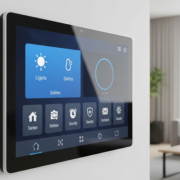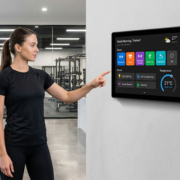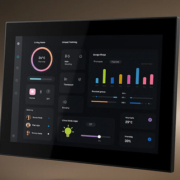Smart Home Control Panel Touch Screen: The Future of Intuitive Home Automation
The smart home control panel touch screen has emerged as a central hub that merges functionality, aesthetics, and ease of use. Whether mounted on a wall or embedded in a smart device, this control panel provides seamless access to lights, security, climate, and entertainment systems — all at the tip of your fingers.
In this article, we explore the power and benefits of touch screen smart home control panels, highlight how leading providers like Portworld are shaping the market, and guide you in choosing the right solution for modern living.
What is a Smart Home Control Panel Touch Screen?
A smart home control panel touch screen is an interactive, wall-mounted or portable device with a graphical interface that allows homeowners to manage all smart devices from one centralized location. Unlike traditional switches or mobile apps, touch screen panels offer a more immersive, always-on experience with instant access to customized controls and automation scenes.
These panels typically integrate with smart home ecosystems like Home Assistant, Google Home, Amazon Alexa, or Apple HomeKit, and provide real-time feedback, status monitoring, and automation management.
Key Features of Touch Screen Smart Home Control Panels
1. Centralized Control
A touch screen panel allows you to manage multiple devices from one place: lights, blinds, HVAC, door locks, intercom, security cameras, and more.
2. Intuitive Interface
Modern panels offer gesture-based navigation, icon-based control, and scene management with responsive, user-friendly UIs.
3. Customizable Layouts
Users can personalize dashboards with widgets, charts, and shortcut buttons, tailored to different rooms or usage habits.
4. Real-Time Monitoring
From live camera feeds to energy usage graphs, the touch panel delivers instant insights into the health and activity of your smart home.
5. Voice Assistant Integration
Many touch screen panels support voice assistants like Alexa or Google Assistant, enabling hybrid interaction (touch + voice).
6. Sleek Aesthetic
The minimalist design blends with modern interiors, replacing bulky switches or remotes with a single elegant interface.
Portworld’s Smart Home Touch Screen Solutions
When it comes to manufacturing high-quality, customizable smart touch panels, Portworld stands out as an industry leader. The company specializes in smart home control panel displays ranging from compact to full-size formats, engineered for seamless integration, durability, and style.
4-Inch & 5-Inch Smart Control Panels
Perfect for bedroom or hallway applications, these small-size panels from Portworld deliver powerful performance in a sleek form factor. Their capacitive touch technology ensures precision control, even in compact spaces.
High-Resolution Capacitive Displays
Portworld offers full-color, high-brightness touch screens that support Android, Linux (Debian/Ubuntu), and custom OS environments — ideal for integrating with any smart home ecosystem.
PoE (Power over Ethernet) Touch Panels
Simplify installation by using a single cable for both power and data — Portworld’s PoE-enabled screens are ideal for smart home and smart office environments.
Multi-Platform Compatibility
Whether your system runs on Raspberry Pi, Intel, Rockchip, or Snapdragon, Portworld’s panels offer native support, making integration seamless and flexible.
Tailored OEM/ODM Services
Portworld provides full hardware and software customization options, including PCBA design, SDK support, and enclosure modifications — perfect for brands or developers building proprietary control systems.
Common Use Cases for Touch Screen Smart Home Control Panels
- Living Room Scenes: Manage entertainment, lighting, and blinds from a single interface.
- Entrance Panel: Control door locks, view doorbell cameras, and arm/disarm security systems.
- Bedroom Touch Panel: Set wake-up scenes, temperature preferences, and night mode with one tap.
- Kitchen Dashboard: Monitor energy usage, control appliances, or view calendar/schedule.
- Whole-Home Controller: Enable full-house automation from a central panel in the main hallway.

